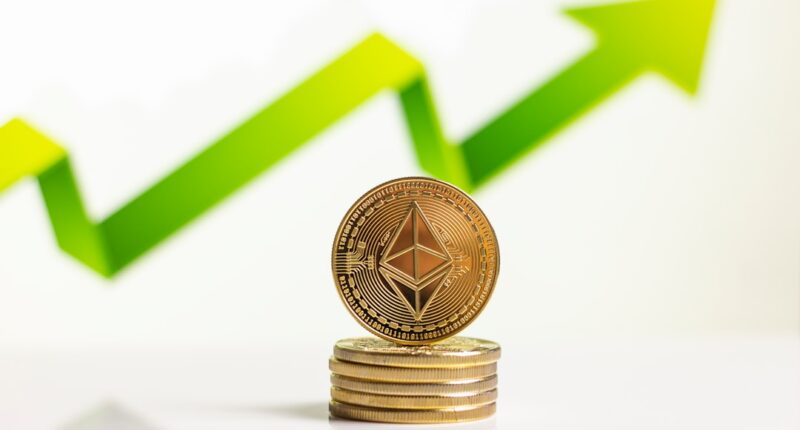Real-world assets (RWAs) encompass a broad spectrum of tangible and intangible items that hold intrinsic value in the physical world. These can range from real estate properties, commodities like gold and oil, to financial instruments such as stocks and bonds. The traditional financial system has long relied on these assets for investment, collateral, and wealth generation.
However, the advent of blockchain technology has introduced a paradigm shift in how these assets can be represented, traded, and managed. By leveraging decentralized networks, RWAs can be tokenized, allowing for greater accessibility, liquidity, and efficiency in transactions. The concept of tokenization involves converting ownership rights of real-world assets into digital tokens that can be easily transferred and traded on blockchain platforms.
This transformation not only democratizes access to investment opportunities but also enhances transparency and security in asset management. As the world increasingly embraces digital solutions, the intersection of RWAs and blockchain technology presents a compelling opportunity for innovation in finance and beyond. Ethereum, as one of the leading blockchain platforms, plays a pivotal role in this evolution, providing the infrastructure necessary for the creation and management of tokenized assets.
Key Takeaways
- Real-world assets refer to physical assets such as real estate, art, and commodities that can be tokenized on the Ethereum blockchain.
- Ethereum and smart contracts provide a secure and transparent way to tokenize real-world assets, allowing for fractional ownership and increased liquidity.
- Tokenization of real-world assets offers benefits such as increased accessibility, lower transaction costs, and 24/7 trading opportunities.
- Despite the benefits, challenges and risks of tokenizing real-world assets on Ethereum include regulatory compliance, security vulnerabilities, and potential market manipulation.
- Use cases and examples of real-world assets on Ethereum include tokenized real estate, fine art, and even income-generating assets like rental properties.
Understanding Ethereum and Smart Contracts
Ethereum is a decentralized, open-source blockchain platform that enables developers to build and deploy smart contracts—self-executing contracts with the terms of the agreement directly written into code. Launched in 2015 by Vitalik Buterin and a team of co-founders, Ethereum has become the backbone for numerous decentralized applications (dApps) and has facilitated the rise of decentralized finance (DeFi). Its unique capability to support complex programmable transactions distinguishes it from other blockchain networks, making it an ideal environment for tokenizing real-world assets.
Smart contracts operate on the principle of trustless execution, meaning that once deployed on the Ethereum network, they automatically enforce the terms of an agreement without the need for intermediaries. This feature significantly reduces transaction costs and speeds up processes that traditionally require extensive paperwork and third-party verification. For instance, a smart contract could automate the transfer of ownership of a property once payment is confirmed, streamlining what is typically a cumbersome process involving lawyers and notaries.
The programmability of Ethereum allows for intricate conditions to be embedded within these contracts, enabling a wide range of applications from simple asset transfers to complex financial derivatives.
Tokenization of Real-World Assets

Tokenization is the process of creating a digital representation of a real-world asset on a blockchain. This involves issuing tokens that correspond to ownership rights or shares in the asset, which can then be traded or transferred on the blockchain. The tokenization process typically begins with an asset being evaluated and verified by trusted parties to ensure its legitimacy and value.
Once verified, the asset is represented by a specific number of tokens on the blockchain, each token representing a fraction of ownership or a specific claim to the asset. One of the most significant advantages of tokenization is that it allows for fractional ownership. For example, consider a luxury real estate property valued at $1 million.
Traditionally, investing in such an asset would require substantial capital upfront. However, through tokenization, this property can be divided into 1,000 tokens worth $1,000 each. This fractionalization opens up investment opportunities to a broader audience, enabling individuals who may not have had the means to invest in high-value assets to participate in the market.
Furthermore, tokenized assets can be traded on secondary markets, enhancing liquidity and providing investors with more options for buying and selling their holdings.
Benefits of Unlocking Real-World Assets with Ethereum
| Benefits of Unlocking Real-World Assets with Ethereum |
|---|
| 1. Increased liquidity for illiquid assets |
| 2. Fractional ownership opportunities |
| 3. Reduced transaction costs |
| 4. Enhanced transparency and security |
| 5. Access to a global investor base |
The integration of real-world assets with Ethereum’s blockchain technology offers numerous benefits that can transform traditional asset management practices. One of the most notable advantages is increased liquidity. In conventional markets, many assets are illiquid due to lengthy processes involved in buying or selling them.
Tokenization allows these assets to be traded on digital platforms 24/7, significantly reducing the time it takes to execute transactions and providing investors with immediate access to their funds. Moreover, the transparency inherent in blockchain technology enhances trust among participants in asset transactions. Every transaction involving tokenized assets is recorded on a public ledger that is immutable and accessible to all network participants.
This transparency mitigates risks associated with fraud and misrepresentation, as all parties can verify ownership and transaction history without relying on intermediaries. Additionally, smart contracts facilitate automated compliance with regulatory requirements, ensuring that transactions adhere to legal standards without manual oversight.
Challenges and Risks of Tokenizing Real-World Assets
Despite its potential advantages, tokenizing real-world assets is not without challenges and risks. One significant hurdle is the legal ambiguity surrounding ownership rights in various jurisdictions. The regulatory landscape for digital assets is still evolving, and many countries have yet to establish clear guidelines for how tokenized assets should be treated under existing laws.
This uncertainty can deter potential investors and create complications for companies looking to issue tokenized assets. Another challenge lies in the technological complexities associated with tokenization. While Ethereum provides robust tools for creating smart contracts and managing tokens, ensuring security against hacking and fraud remains a critical concern.
High-profile breaches in cryptocurrency exchanges have highlighted vulnerabilities within the ecosystem, raising questions about the safety of holding tokenized assets on public blockchains. Additionally, there is a need for reliable oracles—services that provide external data to smart contracts—to ensure that tokenized assets are accurately valued and managed according to real-world conditions.
Use Cases and Examples of Real-World Assets on Ethereum

The application of tokenization on Ethereum has already begun to manifest in various sectors, showcasing its versatility and potential impact on traditional industries. One prominent example is real estate tokenization platforms like RealT, which allows investors to purchase fractional ownership in properties through Ethereum-based tokens. By doing so, RealT not only democratizes access to real estate investments but also streamlines property management through automated rent distribution via smart contracts.
Another noteworthy use case is in the art world, where platforms like Myco allow artists to tokenize their works as non-fungible tokens (NFTs). This innovation enables artists to retain ownership rights while still monetizing their creations through sales or royalties from future transactions. The ability to track provenance on the blockchain adds an additional layer of authenticity and value to digital art pieces.
In the commodities sector, companies like Mattereum are working on bridging physical assets like gold or silver with blockchain technology by creating tokens that represent ownership of these commodities stored in secure vaults. This approach not only enhances liquidity but also provides investors with a tangible asset backing their digital tokens.
Regulatory and Legal Considerations for Tokenized Assets
Navigating the regulatory landscape surrounding tokenized assets is one of the most pressing challenges facing this emerging market. Different jurisdictions have varying definitions of what constitutes a security or commodity, which can significantly impact how tokenized assets are classified and regulated. In some regions, tokens representing ownership in real estate may be considered securities subject to strict regulations, while in others they may fall under different legal frameworks.
Compliance with anti-money laundering (AML) and know your customer (KYC) regulations is another critical consideration for companies looking to tokenize real-world assets. Ensuring that all participants in a transaction are properly vetted can add layers of complexity to the process but is essential for maintaining regulatory compliance and building trust within the ecosystem. As governments around the world continue to develop frameworks for digital assets, companies must remain agile and informed about changes that could affect their operations.
Furthermore, intellectual property rights associated with tokenized assets must also be addressed. For instance, when art is tokenized as an NFT, questions arise regarding copyright ownership and how royalties are distributed among creators and subsequent owners. Establishing clear legal frameworks that protect both creators’ rights and investors’ interests will be crucial for fostering growth in this space.
The Future of Real-World Asset Tokenization on Ethereum
The future of real-world asset tokenization on Ethereum appears promising as technological advancements continue to evolve alongside regulatory developments. As more industries recognize the benefits of blockchain technology—such as increased efficiency, transparency, and accessibility—adoption rates are likely to rise significantly. The ongoing integration of decentralized finance (DeFi) with tokenized assets could further enhance liquidity options for investors while providing innovative financial products that leverage these digital representations.
Moreover, as regulatory clarity improves globally, more institutional players may enter the market, bringing with them significant capital and expertise. This influx could lead to greater standardization in how tokenized assets are created and managed across different jurisdictions, fostering trust among investors and paving the way for broader acceptance within traditional financial systems. In addition to traditional asset classes like real estate or commodities, emerging sectors such as carbon credits or intellectual property rights may also see increased tokenization efforts as businesses seek innovative ways to monetize their resources sustainably.
As Ethereum continues to evolve—potentially transitioning to Ethereum 2.0 with its proof-of-stake consensus mechanism—the scalability and efficiency improvements could further bolster its position as a leading platform for real-world asset tokenization. In conclusion, while challenges remain in terms of regulation and security, the potential benefits offered by tokenizing real-world assets on Ethereum are substantial. As technology matures and regulatory frameworks solidify, we may witness a transformative shift in how we perceive ownership and investment in tangible assets across various sectors.
In exploring the transformative potential of Ethereum in the realm of tokenized real-world assets, it’s essential to consider the broader implications of blockchain technology on financial systems. An insightful article that complements this discussion is available on ETH News, which delves into the foundational aspects of Ethereum and its impact on decentralized finance. This article provides a comprehensive overview of how Ethereum’s smart contract capabilities are revolutionizing asset management and ownership. For further reading, you can access the article here.
FAQs
What is Ethereum?
Ethereum is a decentralized platform that enables developers to build and deploy smart contracts and decentralized applications (DApps). It is based on blockchain technology and uses its native cryptocurrency, Ether, to facilitate transactions and secure the network.
What are tokenized real-world assets?
Tokenized real-world assets are assets from the physical world, such as real estate, commodities, or art, that are represented digitally on a blockchain. These assets are divided into tokens, which can be bought, sold, and traded on a blockchain platform.
How does Ethereum facilitate tokenized real-world assets?
Ethereum facilitates tokenized real-world assets through the use of smart contracts. Smart contracts are self-executing contracts with the terms of the agreement between buyer and seller directly written into code. This allows for the creation and management of digital tokens that represent real-world assets.
What are the benefits of using Ethereum for tokenized real-world assets?
Using Ethereum for tokenized real-world assets provides benefits such as increased liquidity, fractional ownership, transparency, and security. It also enables global access to investment opportunities that were previously restricted to a limited number of investors.
Are there any challenges or risks associated with tokenizing real-world assets on Ethereum?
Challenges and risks associated with tokenizing real-world assets on Ethereum include regulatory compliance, security vulnerabilities, and the potential for market manipulation. Additionally, the valuation and transferability of tokenized assets may pose challenges in certain jurisdictions.




